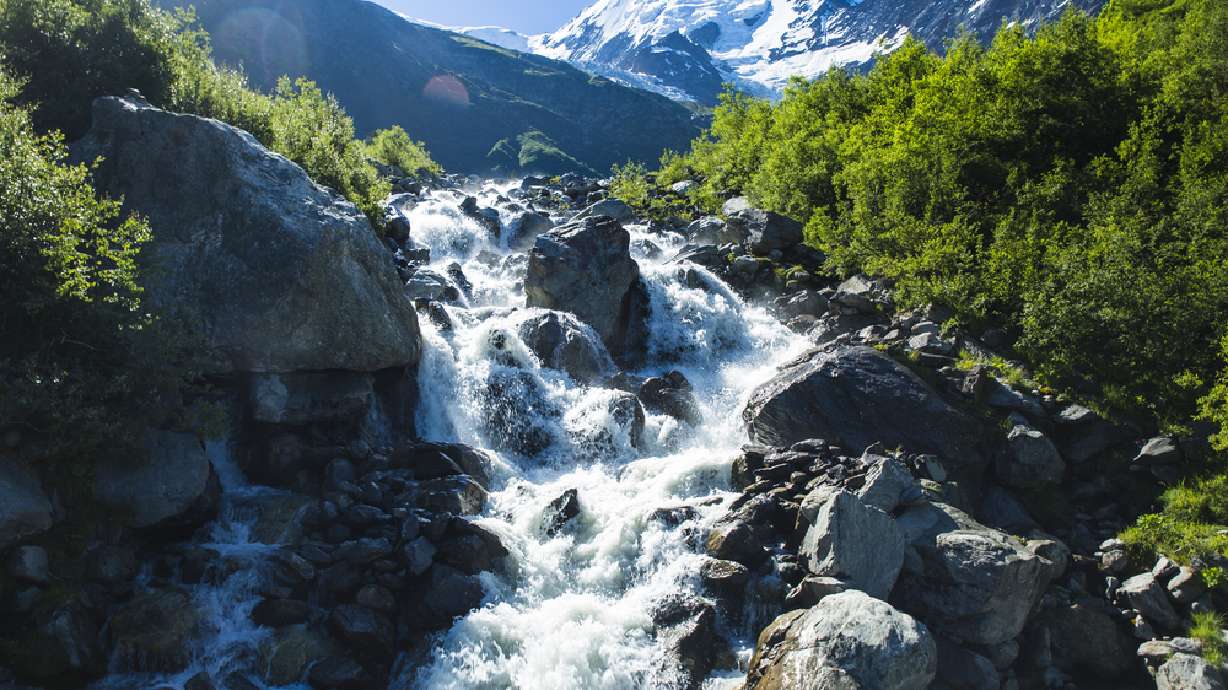Estimated read time: 4-5 minutes
This archived news story is available only for your personal, non-commercial use. Information in the story may be outdated or superseded by additional information. Reading or replaying the story in its archived form does not constitute a republication of the story.
Weber Basin Water Conservancy District reports that there has been good general support from all water users to cut back during this drought summer. With summer's end finally in sight the attention will move to the weather patterns and soil moisture analysis.
The hope is that good fall and winter moisture will result in a better water year for 2023.
Three key ingredients that have major impacts on the productivity of a water year: soil moisture, snowpack and runoff. And just like a good recipe, all ingredients are needed in the right amounts at the right time for a good outcome.
Water years don't line up with the calendar because the water for one year comes in fall and winter from the previous year. October will start the new water year as soil moisture and snowpack accumulate through the winter months. These factors will determine what happens for you as a water user and for our farmers next June and July. It will require a much wetter than normal year to refill all the reservoirs and to help get out of the current drought.
Soil moisture
The first indicator of a poor water year is low soil moisture. Soil is the first reservoir that rain and snow recharge after a storm. When soil moisture is low, the ground acts like a sponge and soaks up the precipitation. When soil moisture is high, precipitation tends to run on the surface to the nearest stream, river or reservoir.
The current drought and lack of stored water in reservoirs has been significantly influenced by soil moisture levels. Issues during the current drought crisis started in October 2020 with soil moisture at record-breaking low levels (most of 2020 saw soil moisture well below normal). This region is still coming out of that soil-moisture deficit. Good rainfall and snowpack next year can recharge our soils and provide enough to fill storage reservoirs.

Snowpack
Winter snowpack is the part of the water supply cycle most visible to Utahns. Snowfall over the prior several years has been less than what is needed to keep water supplies full. Snowpack is Utah's first and largest reservoir of fresh water. Without a good snow year, water scarcity increases and reservoirs remain unfilled. Utah's reservoir system is built to collect melting snow runoff, which is then stored and used for all the area's various water supply needs during the hot and dry summer months.
The Weber Basin drainage averages 324,000 acre-feet of runoff per year with the district typically able to store approximately 220,000 acre-feet in its reservoirs. The remainder flows to the Great Salt Lake which is a very important part of local climate conditions.
In spring of 2021 Weber Basin saw only 7,000 acre-feet of water added to its reservoirs. In 2022 there was 15,000 acre-feet of runoff. The Weber Basin Project was constructed to hold about two years of water supply. Because of prolonged drought, overall water storage is down significantly, even though some of the upstream reservoirs appear to be quite full.
Managers have held as much water as possible in reservoirs at higher elevations to secure a drinking water supply going into 2023, just in case conditions don't improve.
If conditions improve, releases will provide plenty of room in lower storage areas such as Willard Bay to capture any water beyond what upstream reservoirs can hold. But a good snowpack is the second ingredient to getting out of our current drought situation and will be very important this winter.
Click here to see a chart from the USDA showing the Weber/Ogden area snow water equivalent this year compared to 30-year averages.
Runoff
Every year in March and April as temperatures start to warm, snowpack in the mountains starts to melt. It can be difficult to calculate when runoff will start and how it will all come out. If the weather quickly turns hot, dams and reservoirs are used for flood control by leveling out the peaks and valleys of spring weather events. Spring rain and snowstorms also affect how much water flows into reservoirs.
Trying to collect as much water as possible while maintaining adequate stream flow and flood control capacity is a balancing act water managers in Utah must play every year. A mild spring with consistent temperatures would be the best-case scenario for our third water year ingredient, runoff.

Water Conservation Districts
Managing water supply is a complex job that Utah water conservancy districts have managed for more than 70 years. There are ebbs and flows to the rhythms that make up Utah's natural water cycle. Trying to balance out these cycles as much as possible is the primary job of water districts along with ensuring adequate water supply to meet ever-growing demand.
Treatment of culinary water, supply of secondary water, flood control, drought planning, and more are all part of a complex web of what Weber Basin Water Conservancy District does for the Ogden and Weber River watersheds and the people living in those areas. To learn more about Weber Basin, their current projects, rebates, conservation efforts and more, visit www.weberbasin.com.








